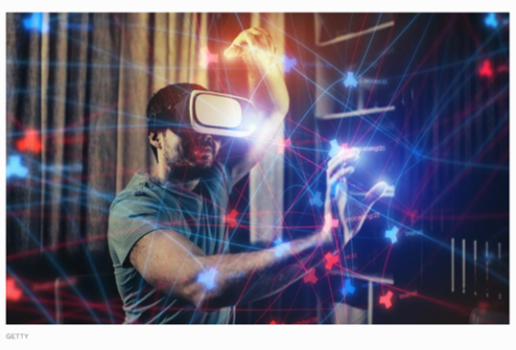K
Kathleen Martin
Guest
During the first week of November 2021, thousands of attendees, speakers and vendors gathered in Midtown Manhattan for the third annual NFT.NYC conference. The eclectic group of investors, gamers, artists, programmers and crypto enthusiasts attended panel discussions, speeches and after-parties, all centered on the burgeoning and lucrative new trend in the blockchain world: the NFT, or non-fungible token.
Still a relatively new blockchain phenomenon, NFT technology establishes ownership of digital assets and has most famously (or infamously) been applied to digital art. But this year’s conference had a new spin: There was a palpable emphasis on the future of NFTs, which many believe lies in their use as building blocks in the next iteration of the internet, referred to as Web 3.0 or “Web3.” Ultimately, the convergence of this platform with NFTs is expected to give rise to a massive, decentralized virtual world called the “metaverse.”
An NFT is a unique and non-interchangeable unit of data stored on the blockchain that can track a unique digital asset's transfer, ownership and properties. The term non-fungible distinguishes NFTs from other blockchain entities like cryptocurrencies, which are equal in value and mutually interchangeable or fungible.
For example, if two people each have a U.S. one-dollar bill in their pocket, they could exchange those two bills with each other, and neither would be richer or poorer for it because those two bills are fungible. But if those same two parties were holding the Mona Lisa and the deed to their home, respectively, they’d each have ownership of something with unique utility and value.
Continue reading: https://www.forbes.com/sites/forbestechcouncil/2021/12/27/the-nft-metaverse-building-a-blockchain-world/?sh=3c9583e9531c
Still a relatively new blockchain phenomenon, NFT technology establishes ownership of digital assets and has most famously (or infamously) been applied to digital art. But this year’s conference had a new spin: There was a palpable emphasis on the future of NFTs, which many believe lies in their use as building blocks in the next iteration of the internet, referred to as Web 3.0 or “Web3.” Ultimately, the convergence of this platform with NFTs is expected to give rise to a massive, decentralized virtual world called the “metaverse.”
An NFT is a unique and non-interchangeable unit of data stored on the blockchain that can track a unique digital asset's transfer, ownership and properties. The term non-fungible distinguishes NFTs from other blockchain entities like cryptocurrencies, which are equal in value and mutually interchangeable or fungible.
For example, if two people each have a U.S. one-dollar bill in their pocket, they could exchange those two bills with each other, and neither would be richer or poorer for it because those two bills are fungible. But if those same two parties were holding the Mona Lisa and the deed to their home, respectively, they’d each have ownership of something with unique utility and value.
Continue reading: https://www.forbes.com/sites/forbestechcouncil/2021/12/27/the-nft-metaverse-building-a-blockchain-world/?sh=3c9583e9531c

